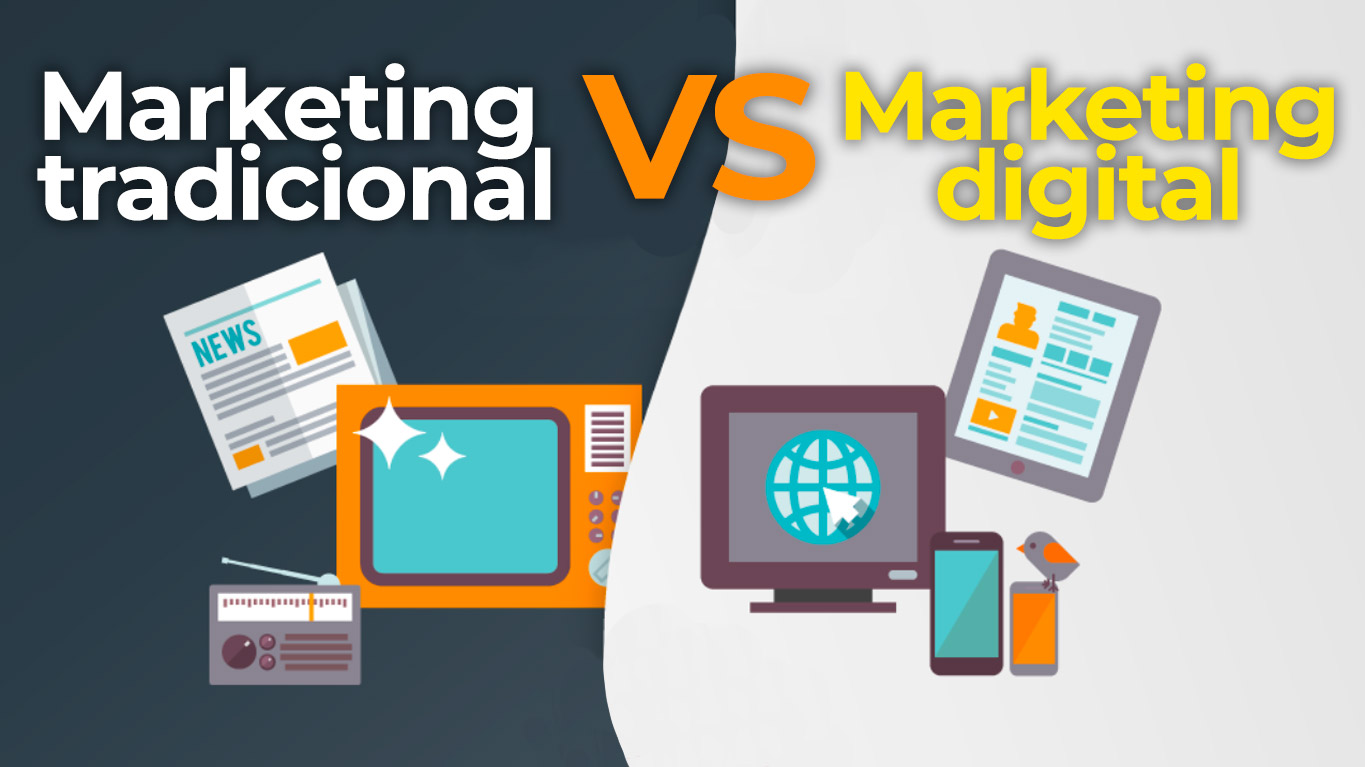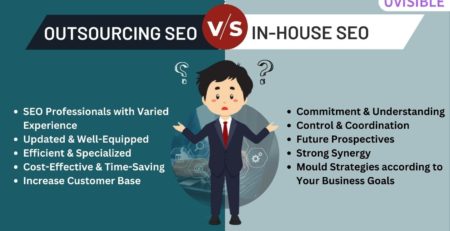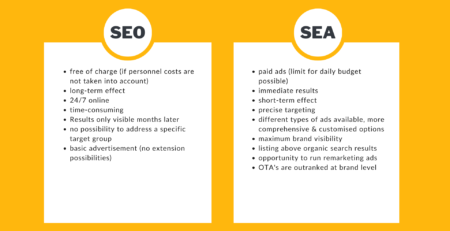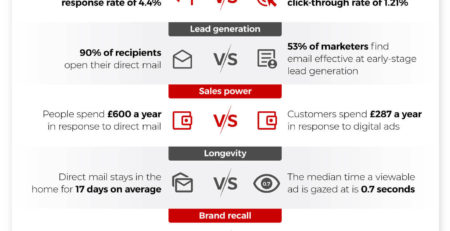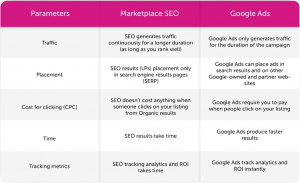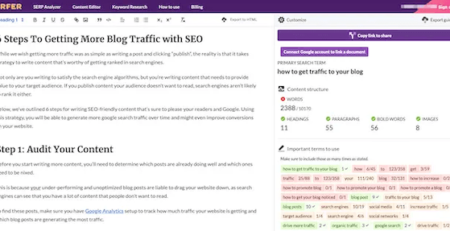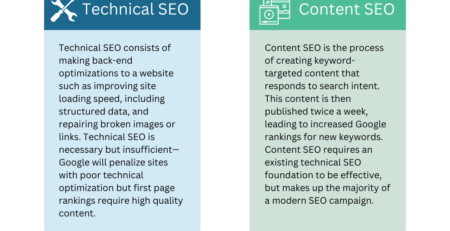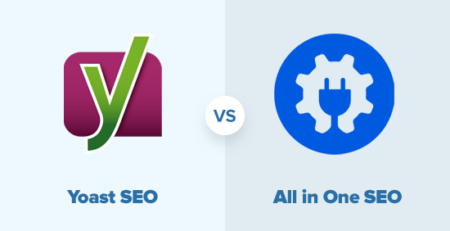Marketing Tradicional Vs Marketing Digital: Get To Know Which Is Right For You?
In today’s digital age, businesses have a wide array of marketing options at their fingertips. Traditional marketing techniques have long been the go-to approach, but with the rise of the internet, digital marketing has taken center stage. So, what exactly is the difference between traditional marketing and digital marketing? Let’s dive in and explore the exciting world of Marketing Tradicional Vs Marketing Digital.
Traditional marketing is like the old faithful that has been around for ages. It includes tactics such as print advertisements, billboards, radio and television commercials, and direct mail campaigns. These channels are designed to reach a broad audience and can certainly make an impact, but they often come with a hefty price tag. On the other hand, digital marketing encompasses all things online, including social media marketing, search engine optimization (SEO), email marketing, and content creation. With digital marketing, businesses have the advantage of targeting specific audiences, analyzing data, and achieving measurable results.
While traditional marketing focuses on reaching a large audience through traditional channels, digital marketing provides a more targeted approach. With digital marketing, businesses can reach their ideal customers right where they spend most of their time – online. The internet allows for personalized messaging, tailored advertisements, and interactive content that engages users in a way that traditional methods simply can’t. Plus, digital marketing provides valuable insights and metrics that allow businesses to adjust their strategies and optimize their campaigns for maximum success.
So, which approach is better? Is it a battle between old and new, or can traditional and digital marketing coexist harmoniously? That’s what we’re here to find out. Join us on this journey as we explore the strengths, weaknesses, and unique benefits of both marketing approaches. Whether you’re a business owner, a marketing professional, or just a curious individual, you’ll gain valuable insights into Marketing Tradicional Vs Marketing Digital. Let’s get started!
The battle between traditional marketing and digital marketing is a hot topic in the business world. Let’s compare these two marketing approaches based on 5 key features:
| Feature | Traditional Marketing | Digital Marketing |
|---|---|---|
| Reach | Local or regional | Global |
| Cost | Expensive (printing, distribution) | Affordable (lower advertising costs) |
| Targeting | Broad audience | Precision targeting |
| Measureability | Limited tracking | Advanced analytics |
| Interaction | Less interactive | Highly interactive (social media, chatbots) |
While traditional marketing has its merits, digital marketing offers a wider reach, affordability, precise audience targeting, advanced analytics, and interactive features. Businesses must adapt to the digital age to thrive in today’s competitive landscape.
Key Takeaways
- Traditional marketing focuses on offline methods like print ads and TV commercials.
- Digital marketing uses online platforms like social media and email to reach customers.
- Traditional marketing is more costly and has limited reach compared to digital marketing.
- Digital marketing allows for targeted advertising and real-time data analysis.
- Both traditional and digital marketing have their strengths and can be used together for a comprehensive marketing strategy.
Comparing Traditional Marketing VS Digital Marketing
In today’s rapidly evolving world, marketing has also gone through a significant transformation. The rise of technology and the internet has paved the way for digital marketing, which has become a game-changer for businesses. However, traditional marketing methods still hold their ground in certain situations. In this article, we will compare traditional marketing with digital marketing to understand their key differences and determine which one is better suited for different scenarios.
Overview of Traditional Marketing
Traditional marketing refers to the conventional methods of promoting products or services. It includes various channels like print advertisements, billboards, radio, television, and direct mail. Traditional marketing relies heavily on physical materials and in-person interactions to reach target audiences. This form of marketing has been around for decades and is well-established in the industry.
Traditional marketing has its strengths in certain areas. For example, print advertisements in newspapers or magazines allow businesses to target specific geographic regions and demographics. Similarly, radio and television commercials can reach a wide audience, making them effective for creating brand awareness on a large scale. Additionally, traditional marketing methods often provide tangible materials, such as brochures and flyers, which can be physically held and shared among potential customers.
However, traditional marketing also has its limitations. It can be expensive, especially for small businesses with limited budgets. The reach and targeting options are not as precise as digital marketing, making it difficult to measure the effectiveness of campaigns. Traditional marketing strategies often require a longer lead time for planning and execution, which may not be ideal for businesses looking for immediate results in the fast-paced digital era.
Overview of Digital Marketing
Digital marketing refers to promoting products or services through digital channels like websites, search engines, social media, email, and mobile apps. This form of marketing leverages the power of technology and the internet to connect with potential customers. Digital marketing has gained immense popularity and has become an essential aspect of any modern marketing strategy.
Digital marketing offers numerous advantages over traditional marketing methods. Firstly, it allows businesses to target specific demographics with precision. Platforms like search engines and social media provide tools for audience segmentation, enabling businesses to reach the right people at the right time. Secondly, digital marketing provides real-time data and analytics, allowing marketers to measure the effectiveness of their campaigns and make data-driven decisions. Thirdly, digital marketing is often more cost-effective compared to traditional marketing, as businesses have greater control over their budget and can reach a wider audience at a lower cost.
However, digital marketing also has its challenges. The digital landscape is constantly evolving, with new platforms and algorithms emerging frequently. This requires marketers to stay updated and adapt their strategies accordingly. Additionally, the online space is highly competitive, making it essential for businesses to have a strong online presence and standout from the crowd. Maintaining engagement and building trust with customers in the digital world can also be more challenging compared to face-to-face interactions in traditional marketing.
Key Features Compared: Traditional Marketing vs. Digital Marketing
Now that we have an overview of both traditional marketing and digital marketing, let’s dive deeper into their key features and compare them:
1. Reach and Targeting
Traditional Marketing: Traditional marketing offers a broader reach, especially through channels like television, radio, and print media. However, the targeting options are relatively limited and may rely on assumptions about the demographics of the audience reached through these channels.
Digital Marketing: Digital marketing provides precise targeting options. Platforms like social media and search engines allow businesses to define their target audience based on factors like age, gender, interests, and location. This makes digital marketing highly effective for reaching specific segments of the population.
2. Cost
Traditional Marketing: Traditional marketing can be expensive, especially for businesses with limited budgets. Costs can include printing materials, media buying, and production expenses. The cost per impression or customer acquisition tends to be higher compared to digital marketing.
Digital Marketing: Digital marketing offers cost-effective options for businesses of all sizes. The cost can be flexible and controlled based on the budget allocated to different digital marketing channels. Pay-per-click (PPC) advertising, for example, allows businesses to pay only when someone clicks on their ads.
3. Measurability and Analytics
Traditional Marketing: Measuring the effectiveness of traditional marketing campaigns can be challenging. It is difficult to track the number of people who saw an advertisement or measure the direct impact on sales. Businesses often rely on surveys or focus groups to gather feedback.
Digital Marketing: Digital marketing provides extensive measurability and analytics. Businesses can track the number of impressions, clicks, conversions, and other key performance indicators (KPIs) in real-time. This data allows marketers to evaluate the success of campaigns, make data-driven decisions, and optimize their strategies for better results.
4. Flexibility and Agility
Traditional Marketing: Traditional marketing strategies often require a longer lead time for planning and execution. Changes or adjustments to campaigns can be time-consuming and may involve reprinting materials or renegotiating contracts with media outlets.
Digital Marketing: Digital marketing offers greater flexibility and agility. Campaigns can be adjusted or optimized in real-time, allowing businesses to respond quickly to changes in the market or audience behavior. Digital marketing enables A/B testing, where different variations of ads or landing pages can be tested simultaneously to identify the most effective approach.
5. Engagement and Interaction
Traditional Marketing: Traditional marketing allows for face-to-face interactions, whether it’s through sales representatives, events, or physical stores. This can create a personal connection and build trust with customers.
Digital Marketing: Digital marketing can also facilitate engagement and interaction, but in a different way. Social media and online communities provide platforms for customers to interact with businesses and share their experiences. Live chats and chatbots can also provide immediate responses and support to customers.
These are just a few key features to consider when comparing traditional marketing with digital marketing. Both forms of marketing have their advantages and disadvantages, and the best approach would depend on the specific needs and goals of a business.
User Experience
The user experience for traditional marketing and digital marketing differs significantly. Traditional marketing relies on physical materials and in-person interactions, providing a tactile and personal experience. For example, flipping through a magazine or receiving a direct mail piece can create a sense of familiarity and tangibility.
On the other hand, digital marketing offers convenience and accessibility. Consumers can access information, products, and services with just a few clicks on their devices. They can explore and research at their own pace, without geographical limitations. However, digital marketing lacks the tactile aspect of traditional marketing and may feel more impersonal for some individuals.
Ultimately, the user experience depends on the preferences and behaviors of the target audience. Some individuals may prefer the convenience of digital marketing, while others may appreciate the tactile experience of traditional marketing.
Pros and Cons
Traditional Marketing: Pros
- Wide reach through traditional media channels
- Tangible materials can create a sense of trust
- Personalized interactions through face-to-face interactions
Traditional Marketing: Cons
- Expensive, especially for small businesses
- Difficult to measure campaign effectiveness
- Longer lead time for planning and execution
Digital Marketing: Pros
- Precise targeting options for specific audiences
- Real-time data and analytics for measuring campaign success
- Cost-effective compared to traditional marketing
Digital Marketing: Cons
- Constantly evolving digital landscape requires staying updated
- Building trust and engagement online can be challenging
- May feel impersonal for some individuals
Price Comparison
When comparing prices between traditional marketing and digital marketing, it’s important to consider the specific tactics and channels used within each method. Traditional marketing often involves costs associated with printing materials, media buying, production, and distribution. On the other hand, digital marketing expenses can vary depending on the channels chosen, such as online advertising, search engine optimization (SEO), content creation, and social media management.
In general, digital marketing is considered more cost-effective compared to traditional marketing. Digital campaigns can be optimized and adjusted in real-time, allowing businesses to allocate their budget more efficiently based on performance. Additionally, digital marketing offers more affordable options for businesses with limited budgets, such as pay-per-click advertising, where businesses only pay when someone clicks on their ads.
Comparing Traditional Marketing and Digital Marketing: Feature Comparison Table
| Feature | Traditional Marketing | Digital Marketing |
|---|---|---|
| Reach and Targeting | Broader reach, limited targeting options | Precise targeting options |
| Cost | Expensive, higher cost per impression | Cost-effective, flexible budget allocation |
| Measurability and Analytics | Difficult to measure campaign effectiveness | Real-time data and analytics |
| Flexibility and Agility | Longer lead time for planning and execution | Real-time adjustments, A/B testing |
| Engagement and Interaction | Personal interactions, face-to-face | Online engagement, social media |
These are just a few features to consider when comparing traditional marketing and digital marketing. The choice between the two will depend on the specific goals, target audience, and resources of a business.
Which is Better?
When it comes to determining which is better between traditional marketing and digital marketing, there is no one-size-fits-all answer. Both forms of marketing have their strengths and weaknesses, and the decision should be based on the specific needs and goals of a business.
Reasons to Choose Traditional Marketing:
- Targeting a wide audience through traditional media channels
- Creating trust and familiarity through physical materials
- Personalized interactions that build relationships with customers
Reasons to Choose Digital Marketing:
- Precise targeting options for specific demographics
- Real-time data and analytics for measuring campaign effectiveness
- Cost-effective options for businesses with limited budgets
In conclusion, the choice between traditional marketing and digital marketing depends on various factors, such as the target audience, budget, and goals of a business. It may be advantageous for businesses to adopt a hybrid approach, combining elements of both traditional and digital marketing to maximize their reach and effectiveness.
Frequently Asked Questions
Traditional Marketing vs Digital Marketing – what’s the difference?
Q: How does traditional marketing differ from digital marketing?
A: Traditional marketing refers to traditional channels like print ads, TV commercials, billboards, and direct mail. These methods are offline and have been used for decades. On the other hand, digital marketing utilizes the internet, social media, email marketing, and search engine optimization (SEO). Digital marketing is focused on reaching customers online.
Unlike traditional marketing, digital marketing allows for precise targeting, measurable results, and cost-effectiveness. It leverages technology to reach the right audience and engage with them in real-time, increasing the chances of conversions and business growth.
Q: Which type of marketing is more cost-effective?
A: Digital marketing is generally more cost-effective than traditional marketing. Traditionally, businesses had to invest a substantial amount of money in print ads, TV ads, or billboards, which can be expensive and have limited reach. Digital marketing, on the other hand, offers various cost-effective options such as email marketing, social media advertising, and pay-per-click (PPC) campaigns that can be tailored to fit any budget.
Moreover, digital marketing provides better control over ad spending through real-time analytics and data-driven insights. This allows businesses to optimize their campaigns, allocate their budget more efficiently, and achieve a higher return on investment (ROI).
Q: Which marketing strategy offers better targeting?
A: Digital marketing has a distinct advantage when it comes to targeting. While traditional marketing relies on broad demographics, digital marketing allows for precise audience targeting based on interests, behaviors, demographics, and even location. Digital platforms like Facebook, Google Ads, and LinkedIn offer advanced targeting options, ensuring that your messages reach the right people at the right time.
This level of targeting enables businesses to personalize their marketing efforts, making them more relevant and increasing the chances of engagement and conversion. Traditional marketing, on the other hand, typically casts a wider net and may not reach the intended audience with the same level of precision.
Q: Which marketing approach provides better measurement of results?
A: Digital marketing offers extensive measurement and analysis of results compared to traditional marketing. With digital marketing, businesses have access to various analytics tools that provide real-time data on website traffic, ad impressions, click-through rates, conversion rates, and more. This data allows businesses to evaluate the success of their campaigns and make data-driven decisions to optimize their marketing efforts.
Traditional marketing, on the other hand, has limited measurement capabilities. While businesses can estimate the reach of print or TV ads, it is challenging to track their impact accurately. Digital marketing, with its robust analytics and tracking capabilities, offers a more accurate and comprehensive understanding of campaign performance.
Q: Can traditional marketing and digital marketing work together?
A: Absolutely! While digital marketing has gained prominence, traditional marketing still holds value and can complement digital efforts. Many successful marketing campaigns use an integrated approach, leveraging the strengths of both traditional and digital channels. For example, a business may run a TV commercial to raise brand awareness and direct viewers online through a targeted digital campaign.
By integrating the two, businesses can reach a wider audience and create a cohesive brand experience across different touchpoints. The key is to identify the right blend of traditional and digital marketing channels that align with the target audience, objectives, and budget of the business.
💼 3 diferencias del Marketing Tradicional con el Marketing Digital
Summary
In this article, we’ve learned about the differences between traditional marketing and digital marketing. Traditional marketing uses methods like TV ads and billboards to reach people, while digital marketing uses the internet and social media. Digital marketing allows businesses to target specific audiences and measure their success more easily.
Traditional marketing can be more expensive and harder to track how well it’s working. With digital marketing, businesses can see how many people clicked on their ads and if they made a purchase. Digital marketing also lets companies interact with customers directly through social media, which can help build relationships and increase trust.
Overall, both traditional and digital marketing have their pros and cons. Traditional marketing can reach a wider audience, but digital marketing allows for more targeted and measurable campaigns. In today’s world, digital marketing is becoming more important as people spend more time online. So, if you’re thinking about starting your own business or working in marketing, it’s essential to understand both traditional and digital marketing methods to reach your goals.

